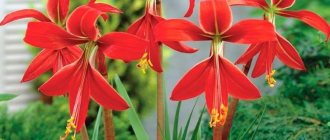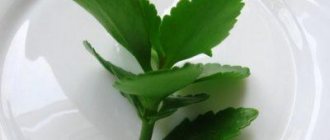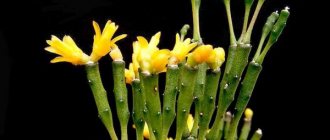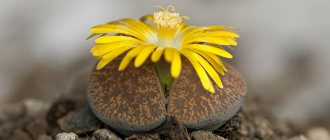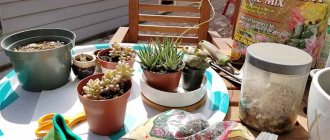Breeding Tips
Despite the fact that caring for the Decembrist in most cases does not cause difficulties, there are still features that should be taken into account.
Several features of the Decembrist:
- As soon as the buds begin to form, the flowerpot with the plant cannot be moved, otherwise the inflorescences will fall off.
- Decembrist does not tolerate watering with water containing chlorine and lime.
- Spraying should be done with warm water.
- Excess water should not be allowed to stagnate, especially in the winter season.
- Fertilizing is carried out with solutions of mineral and complex fertilizers; chemical preparations must be diluted more strongly than indicated on the packaging.
- Decembrist can be grown as an ordinary bush or hanging plant.
With proper care, the Christmas tree grows and blooms profusely for 15 to 20 years.
Possible difficulties after planting the cuttings
1. Withers. The most likely cause is a fungal infection - late blight or phytium. Another reason for leaf wilting is a disease of the root system. If the central trunk of the bush has become unstable, the roots may have died from watering with too cold water. Fertilizers could burn the root system. Regardless of the reason for the wilting, the plant must be carefully dug up and, depending on the state of the root system, a further algorithm of action must be selected:
- cut off the damaged area of the roots, and plant the remaining healthy bush in a flowerpot; if the cause of death is fertilizers, the substrate is completely changed;
- if the root system is completely dead, use cuttings to propagate young plants.
2. Decembrist does not bloom. The Christmas tree has a calendar according to which the plant blooms. If the period of bud formation is not preceded by a rest period, do not expect the Decembrist to bloom. The rest period is as follows:
- from the second half of September, watering of the Decembrist is reduced, fertilizers are stopped and the flowerpot is placed in a cool room;
- at the end of November, the flowerpot is placed on a bright windowsill and watering is gradually increased; as soon as buds begin to form, the plant stops moving and rearranging.
3. Leaves fall off. For many gardeners, especially beginners, the sudden fall of leaves comes as a surprise, since it is difficult to find the cause of leaf fall. Why can a Decembrist shed leaves:
- spider mite;
- lack of nutrients in the soil;
- insufficiently humid air;
- sudden temperature change;
- draft;
- untimely transplantation.
If you promptly identify the cause of leaf fall, you can quickly eliminate the problem and return the Decembrist to its original healthy appearance.
Diseases and pests
Decembrist is a hardy plant, resistant to various diseases. However, improper maintenance conditions can cause dangerous fungal diseases.
Fusarium, late blight, phytium are fungal diseases that affect the root collar. The most likely route of infection is through the soil, where the infection can live for a long time. The infected plant becomes pale, acquires a grayish tint, withers, and individual segments fall off. The bush is treated with special preparations - “Vitaros”, “Topaz”.
Among the pests, the most dangerous for the Decembrist are mealybugs and spider mites. Scale insects form white lumps on the plant that look like cotton wool. They can be easily removed with a cloth moistened with alcohol. If this procedure turns out to be ineffective, you can purchase a special preparation at a flower shop.
The spider mite weaves a thin web around the plant, and the pest is discovered through it. An effective anti-insect drug is Actellik.
Pests and diseases
Christmas trees suffer from fungal diseases: fusarium, phytium and late blight. Fusarium is treated with fungicides, and phytium and late blight, which primarily affect the root collar, are cured with drugs such as Maxim, Vitaros, Topaz.
Bacterial diseases arise from infection of the Christmas tree by a group of Erwinia bacteria, and look something like this: a dark spot appears at the base of the stem, then it spreads throughout the stem. Sometimes this is accompanied by discoloration of the stem, sometimes the stem acquires a reddish tint unusual for the plant.
Antibacterial drugs are ineffective; the best way to prevent the death of the plant is to promptly remove the affected part of the stem. If the process has gone too far, it is better to quickly carry out cuttings and grow a new, healthy plant, and say goodbye to the old, sick one.
- Photo of hydrangea with species names
Of the pests that plague Christmas trees, they are mainly spider mites, which die after treating the plant with Actellik or Fitoverm. If you find white lumps between the shoots that look like cotton wool, it means that your Christmas tree is infested with mealybugs, which means you will need Aktara or something similar.
Why does the Christmas tree wither?
If you regularly water the flower, but despite this, the Christmas tree withers, check whether the dry hot air of the central heating radiators is affecting it. Regular spraying of the plant is necessary, since it comes from tropical forests. And think about whether it’s time to change the soil in the pot, maybe the plant needs new nutritious soil?
Why doesn't the Christmas tree bloom?
The reason that the Christmas tree does not bloom is usually due to improper lighting and insufficiently fertile soil: try not to keep it in a north-facing window and, if necessary, shade it from direct sunlight. Do not move the pot with the plant as soon as the buds appear, otherwise the plant may drop them, and you may have to rack your brains for years on how to get the Christmas tree to bloom.
Why does it fall?
The reason that the leaves of the Christmas tree fall off is an excess of moisture in the roots of the plant. Succulents tolerate dry soil much easier than liquid mud instead of soil. Try not to water the Christmas tree for several days, then pull it so as to pull the plant out of the pot along with the earthen lump: if you see dark rotted roots and hear the musty smell of rot, immediately plant the Christmas tree cuttings, because the “flooded” plant will most likely die. Although, if you change the soil and stop over-watering the Christmas tree, it may recover.
How to care for the Decembrist flower at home
Schlumbergera is an unusual type of cactus. It blooms in winter and does not like high temperatures and bright sunlight. Therefore, the conditions for its maintenance are radically different from the conditions for growing other cacti and succulents. There are certain rules on how to care for Decembrist so that it blooms and has lush and healthy stems.
Lush flowering depends on maintenance conditions
Temperature conditions of growth, location determination
Decembrist, like other representatives of zygocacti, cannot tolerate exposure to direct sunlight. However, the plant requires good lighting. Therefore, for the location of the Decembrist, it is preferable to use window sills on the eastern side of the room. In summer, the flower can be placed in the open air or on the balcony.
Temperature conditions should be selected depending on the periods of plant development. Active growth (vegetation) occurs during the warmer season - from April to September. During the growing season, the flower needs free access to oxygen; the ideal temperature for it will be +20°C.
In the fall, Schlumbergera freezes to prepare for flowering. Incorrect maintenance is the reason why Decembrist does not bloom at home. For a comfortable rest, the flower needs to create conditions of coolness and low humidity. If the plant was kept in the air in the summer, then in the fall it can be left there, keeping the temperature at least +12°C, the temperature in winter - from +16°C to +22°C.
What kind of land is needed for the Decembrist
Before planting Decembrist, you should prepare high-quality soil for it. Schlumbergera is a representative of a species of epiphytes that naturally grow on other plants. Accordingly, the soil must freely allow moisture and air to pass through. The soil mixture consists of leaf soil and sand in equal parts. For better nutrition of the flower, peat or charcoal is added to the mixture. Packaged soil for cacti, sold in stores, is not suitable, as it contains an excessive amount of peat.
The soil for cacti is oversaturated with peat
Rules for transplanting Decembrist at home
How to replant Decembrist at home so as not to harm the flower? It is recommended to do this after flowering in early spring. For the first few years, shoots are replanted every spring, then once every 3 years. The new pot should be 2 cm larger in diameter than the old one. One third of it is filled with drainage. To improve moisture permeability, fine expanded clay is added to the soil mixture. Schlumbergera does not require a high pot as it has shallow roots.
How to water Decembrist depending on the time of year
Unlike other cacti that can be watered infrequently, Schlumbergera requires regular watering. However, you cannot flood the flower, as its roots may rot. You need to water with soft water at room temperature.
Spraying allows you to get rid of dust on the stems
During the growing season, moderate watering is needed. Decembrist must be regularly sprayed with warm water so that the plant receives moisture and the stems are cleaned of dust.
Catalog of indoor flowers with photos and their names. In a special publication on our portal we will talk in detail about indoor flowers. You will learn the types of indoor flowers, about fruit indoor flowers and get acquainted with the photo gallery.Christmas flower - features
When you imagine a cactus, a picture of a thorny plant pops up before your eyes, but there are no rules without exceptions, and the Christmas tree is just such an exception: a cactus without thorns.
In general, the Christmas tree is a special plant, and the gardener needs to know about its characteristics:
- flowering begins in December, before the New Year, which is why it is called Decembrist or Christmas tree;
- since the flowers open slowly, they remain on the stems for a very long time;
- The Christmas tree feels best on north-eastern or western windows. The south window will require shading from the sun's rays;
- as soon as the Christmas tree begins to bud, do not move the pot, otherwise the plant may drop all its buds;
- Water containing chlorine or lime is not suitable for irrigation. The best water for watering a Christmas tree is rainwater, but if there is nowhere to get it, water it with tap water that has stood for ten days;
- In addition to watering, a very important condition for the Christmas tree is air humidity: like all Brazilian plants, the Christmas tree needs to be sprayed with warm water.
Reproduction
Schlumbergera is propagated only by cuttings. Start the event in early spring, when all the Decembrist buds have faded. You can combine this event with crown formation.
How to propagate zygocactus:
- For cuttings, select strong shoots with 2-3 segments and twist them by hand. Before planting, be sure to dry them for 2-3 days.
- Fill 100–200 ml pots with soil with the same composition as for adult plants.
- Water the substrate generously and plant the cuttings in it to a depth of 1 cm.
- Cover the planting with film or glass and place it in a place out of direct sunlight.
- Maintain a temperature of +15…+20 °C near the greenhouse. Do not forget to ventilate the planting daily and regularly spray the soil with warm water from a spray bottle.
- When the cuttings take root and become stronger, remove the cover.
After six months, transplant the young plants into individual pots up to half a liter in volume. In the future, provide the flowers with regular care at home. Reproduction of the Decembrist flower, as you can see, is a simple process. The main thing is to follow the recommendations, and the cuttings will definitely take root.
Circumcision, transplantation, reproduction
Simply trimming the Christmas tree is enough. This is done for a beautiful and even crown. Over time, you will notice that the stems gradually begin to branch; this does not add elegance to the plant itself and pruning is necessary. You will just need to gradually remove the stem links, which from the outside seem superfluous, and also remove old branches from the plant. These shoots can be immediately used for propagation by cuttings.
If you decide to replant a Christmas tree, remember that according to the recommendations of experts, it is advisable to replant the plant every 2-3 years. Care at home involves replanting with just such regularity. If the plant is no longer young, then it needs to be replanted much less frequently - once every 4-5 years. Conveniently, the plant does not need a large pot. You will need a drainage layer, as well as 2/3 of a pot of substrate that you make yourself. If we talk about soil, home care involves the use of sand, peat, foliage and a turf layer for planting. It is better to do this in mid-March.
Christmas tree propagates by cuttings. Cuttings that contain only 3-5 segments are perfect for this. It is necessary to bury them in a sufficiently moist substrate. This does not require a deep container, but the plant will feel very good. Christmas tree takes root better when a glass jar or bottle is placed on top, but with the neck cut off, which allows you to organize a greenhouse. To prevent the cutting from rotting, you need to regularly lift the jar so that oxygen penetrates there.
It is important to note that the plant is suitable for those who have no experience in growing indoor flowers. When replanting or propagation of plants occurs quickly and does not require additional equipment, minerals or enormous floriculture experience, caring for them becomes much more pleasant.
Reproduction
- By cuttings. The broken off segments are dried for 2 - 3 days. Then simply stick the cutting into moist soil for cacti or orchids. For better rooting, add a small amount of root. After planting, the pot is covered with a transparent film and, ventilated regularly, awaits the appearance of the next segment. After this, the film is removed and cared for as for an adult Schlumbergera.
- Vaccination. To do this, use another cactus. Either the top is cut off, a schlombergera segment is inserted and tied (pinned) into it, or a side incision is made and the same procedure is carried out.
- Seeds. For this you need two flowering plants. On the second day of flowering, cross-pollination is carried out with a brush or cotton swab. The ripening of seeds in fruits lasts 6 - 8 months. After the fruit has become soft, it is picked and the seeds are removed. Treated with a solution of potassium permanganate, the seeds are sown on moist soil. After 6 - 8 weeks of growth, picking is carried out. In the first year of life it is transplanted every three months, in the second it is transplanted three times. The Christmas tree obtained in this way is considered adult only after two years of growth.
Important! Starting from the second month of growth, it is mandatory to fertilize with half the dose of fertilizer for cacti and spray with an aqueous solution of ammonia (a teaspoon per two liters of water).
If an amateur gardener adheres to the simple rules of care and cultivation at home that Schlumbergera requires, then in the end a small cactus from several small segments will turn into a luxurious branched plant that will delight with its large flowers every winter. Now you know how to grow Schlumbergera.
You can learn how to propagate the Decembrist flower at home here.
Secrets for getting flowering
After you bring the Christmas tree home, it needs to be replanted. To do this, mix sand, leaf and turf soil in equal proportions, add charcoal to the soil and line the bottom of the pot with a layer of expanded clay. It is recommended to replant adult plants every five years, young plants - every year. If you want your flower to bloom faster, after the first frost, place it in a cooler room with optimal humidity. In order to prolong flowering, promptly cut off all faded flowers.
To encourage the flower to form a large number of buds, feed it with potassium and phosphorus-containing fertilizers, starting in April. You can take ready-made fertilizer intended for fertilizing cacti and succulents. You can also prepare the fertilizer yourself by mixing 2 tbsp. l. ash, 2 tbsp. l. sugar and weakly concentrated cow manure with a liter of water.
Preparing to plant a plant
The success of growing Varvara braid depends on proper planting. Read on to learn how to plant crayfish.
Did you know? According to popular belief, Schlumbergera
—
This is a flower that absorbs and transforms evil energy and transforms the atmosphere in homes into a positive direction.
Optimal conditions and choice of location
The Schlumbergera cactus migrated to us from tropical countries - Brazil and South America. In its natural environment, it grows on the rhizomes and trunks of tropical plants. Due to the fact that the tropics are areas with an abundance of dense greenery, zygocacti have adapted to live in shaded conditions.
The Christmas tree does not welcome direct sunlight, which can burn the sensitive leaves of the crop. The best place for the flowerpot will be a corner away from the window, which will need to be shaded if necessary. During the flowering period, Schlumbergera will feel great on a shelf, closet or wide windowsill. The main thing is to make sure that the flowerpot has enough space and its stems are not crowded. Despite its tropical habits, the flower acclimatized well in indoor conditions. It does not require narrow temperature restrictions: it feels great in the temperature range of +10…+35ºС. But at the same time, you should not test it with sudden changes in climatic conditions, for example, by taking it from a warm room to a cold balcony. Preparation for changing temperature conditions should be moderate.
Decembrist is demanding of environmental humidity. It will not feel well in dry air, and during the budding period, future flowers will begin to fall off, so there must be an air humidifier, a tray filled with expanded clay stones, or at least a wet towel near the flowerpot.
Important! Christmas tree shoots need regular spraying (2 times a week). In this case, it is worth covering the soil with a polyethylene film so that water does not fall on the ground.
Also make sure that the flower is not adjacent to heating devices.
Selecting a container for planting
Flower growers who want to place a Varvarin flower in their home are often concerned about the question of what pot is needed for planting. The Schlumbergera cactus has a small rhizome, so the size of the container for planting it should be small. This is the case when the width of the pot should exceed the height. As for the material, it is best to take clay or ceramic containers.
You can also use plastic ones. The main thing is to take care of good drainage of the pot: you can purchase a container with ready-made holes or drill them yourself. As the flower grows, it will need to be replanted and, accordingly, a larger pot will need to be selected.
Preparing the soil for planting
The ideal substrate for Christmas is soil mixtures for cacti, which are sold in every flower shop. The main requirements of the Decembrist for the substrate are looseness, high nutritional value, good air and water permeability. If desired, you can prepare the required soil yourself by mixing turf and leaf soil with peat and coarse river sand or brick chips, the required proportions are 1:1:1:1.
Important! The optimal soil acidity for zygocactus is 5.0–6.5 pH.
To prevent moisture from stagnating at the roots of the plant, it is recommended to add a little perlite and wood bark (preferably oak) to the prepared soil. Before planting, the substrate must be disinfected. It is advisable to heat it in the oven (about 10 minutes), steam it in a water bath, or pour it with a light pink potassium permanganate solution. You can also carry out disinfection by mixing the prepared substrate and crushed coal.
Rozhdestvennik: care, reproduction, diseases
Author: Natalya February 21, 2022 Category: Houseplants
Rozhdestvennik (lat. Schlumbergera) , or Schlumbergera , or Zygocactus , or Decembrist , is a genus of epiphytic (living on the branches of other plants) cacti from the tropical forests of Brisilia. The Christmas flower came to Europe with the collector Allan Cunningham in 1816, and in 1858 Charles Lemaire named it in honor of the then famous succulent collector Frederick Schlumberger. Zygocacti grow on tree branches and are branching shrubs with flat, jointed shoots without thorns, but with jagged edges. Flowers (red, white, orange, purple, pink, lilac) are located at the ends of hanging stems and reach a length of 4-8 cm.
Description of the plant
Schlumbergera is a special genus of cacti native to the tropical forests of South America. It was brought to Europe at the beginning of the 19th century and since then has been successfully used as an ornamental houseplant.
In countries located on the territory of the former USSR, this flower is also known under the names “Decembrist”, “December”, “Rozhdestvennik”, “Christmas cactus” and “zygocactus”.
Did you know? Federick Schlumberger is a famous cactus collector who lived in Normandy in the 19th century. Its name was given to a beautifully flowering succulent in 1858 by another Frenchman, Charles Lemaire, a botanist and writer, who spent his entire life preparing materials for a large-scale book about cacti, but never implemented the plan to publish it due to poverty and lack of a sponsor.
Zygocactus is an epiphytic plant. This means that the root system of this succulent is very weak and superficial, so the flower receives all the main nutrients and energy through aerial roots and through photosynthesis, using moisture in the air.
In dense tropics, this ability allows the cactus to withstand competition with other, more powerful plants and, using them as a support, to reach closer to the light.
Decembrist, like other cacti, has no leaves. Their function is performed by numerous bright green stems, formed in the form of a lush bush and representing long and flat drooping chains, as if assembled from several successively connected cell fragments measuring approximately 2x3 cm with jagged edges.
Wild varieties of zygocactus have spines, but most indoor plant hybrids lack such “decoration”.
At home, zygocactus can grow up to 40 cm in height, and the decorative flowing stems allow the flower to be grown not only on window sills, but also in hanging pots (in the hanging manner).
Christmas tree flowers bloom in several tiers at the top of the stems, 1–3 on each. The shape is a slightly curved tube with wide petals and far protruding pistils.
Find out more about how to properly plant and care for Decembrist at home.
The sizes of the flowers are quite large, and the color can be different: the natural shades for zygocactus are red and white, but among the hybrids bred by breeders there are plants with pink, yellow, orange and purple flowers.
Schlumbergera received its popular names due to its most characteristic flowering time. While in Brazil this process occurs in the summer, in the northern hemisphere the cactus usually begins to bloom in the winter months.
However, experienced flower growers claim that with good care, the plant can delight you with the appearance of flowers at any time, sometimes twice or even three times a year.
Rozhdestvennik: brief description
Although the correct name for the plant is Schlumbergera, other names are used in the literature. Most often it is called zygocactus, but there are other options: epiphyllum, epiphyllanthus, zygocereus, etc. All these are synonyms. The flower received its correct Latin name in honor of Frederic Schlumberger, a famous French collector of succulents and cacti, who made an invaluable contribution to their study. But it was not he who discovered this plant, but the collector Allan Cunningham at the beginning of the 19th century.
Christmas flower (Schlumberger, Decembrist)
In Russia, the folk names of this plant are more popular. All of them are associated with unusual flowering times. For example, “Decembrist” and “December”.
This plant is a branching shrub. Its shoots are flat and jointed. It differs from other cacti in that it does not have spines, but has jagged edges. In winter, beautiful flowers appear on this plant - they are quite large, can reach 8 cm in length. Their shades can also be different - from pale pink to red and even purple.
What kind of pot is needed for a zygocactus: description and photo
Decembrist, also called zygocactus, is an unpretentious plant, but it is still necessary to observe certain conditions for caring for it. First you need to choose a pot in which the Decembrist will grow. You can choose a standard clay vessel, a plastic pot, or even an enamel bowl
It is important that the container for the plant has a wide radius and stability, but is not too bulky
The root system of the Decembrist is miniature; it does not need huge containers. After purchasing a plant, it must be replanted at home, because the soil intended for transportation is not suitable for the systematic and healthy growth of the Decembrist, nor for its flowering.
In a pot that is too large, the Decembrist will constantly enlarge the root system, and you can forget about flowering during this period
It is important to choose a small but wide container that will be ideal for the plant. Next you can see photos of pots suitable for planting the plant:
Below you can see photos of pots suitable for planting plants:
Varieties of Decembrist flower
Initially, only 2 varieties of Decembrist were widespread - with white and with red flowers. The emergence of new varieties, the range of which is regularly replenished, is the merit of breeders.
The most famous varieties:
Rousseliana
A bush characterized by lush flowering and a tendency to branch, up to 30 cm high with long meter-long shoots. The petals of tubular flowers look like bells with long stamens.
Truncated
Spreading bush with light green long shoots. Multi-tiered flowers are decorated with pointed petals and a cascade of stamens. Color varies from lilac to white.
Buckley
Bush up to 40 cm high with dark green fleshy shoots. Flowers start from 8 cm in size. Color depends on the variety.
More than a hundred Decembrist hybrids have been bred. They are united in a series, the differences between which are only in the shades and sizes of the flowers. The conditions for growing Decembrist do not change.
What periods does the plant go through?
Active growth
Decembrist actively develops from March to September. The root system increases significantly in size. Access to fresh air during this period is required. It is possible to use both window sills and warm balconies and loggias. If possible, the Decembrist should be placed under a lush tree, provided that the daytime temperature is +20°C and above. As the soil dries out throughout the summer, regular watering is carried out. Excess moisture or stagnation should be avoided, as the cactus does not like this. Fertilizers and feeds are used to promote growth and are applied every few weeks.
Rest
The whole month of October is allotted for this plant. Growth during this period is inhibited, as new buds are being laid. The length of daylight hours becomes shorter, as well as the need for frequent watering fades into the background. The temperature should be 12-19°C. The plant remains in the same place (balcony, clearing, window sill) until the end of the period.
The trick to increasing the number of buds is to water them not with ordinary water, but with tea leaves. After such manipulations, even those representatives that have not produced buds for the last few years begin to bloom. The compositions used for flowering plants are used as fertilizers, which are applied at the end of the month.
Period of abundant flowering
This stage of the Decembrist’s life lasts for two months and lasts until January. The plant is located in a warm room in which the temperature will be 16-19°C. Watering is carried out abundantly, but not frequently. The settled water should be replaced with weak tea without fillers and flavorings. Phosphorus and potassium compounds are used as fertilizers. To develop strong and healthy buds, you should then use egg tincture or calcium nitrate. After the first buds appear, the pot should not be moved or rotated.
Stasis
Lasts no more than a month and is interrupted with the onset of March. The time is coming for the formation of the Decembrist bush. It is not recommended to remove the upper segments; they are carefully unscrewed. Otherwise, branching and increased density may begin.
During this time, you should often pay attention to the surface of the soil, which should not dry out.
Mistakes by newbie gardeners lead to the following consequences:
- Cessation of Decembrist flowering for an indefinite period. It is a consequence of lack of compliance with the correct temperature regime. An incorrectly selected soil mixture will give the same result.
- Frail buds quickly crumble. This indicates that the pot was often moved or rotated. Watering conditions may not be observed. It is impossible to stop the process of shedding buds.
- The segments begin to rapidly turn red. The plant was simply frozen. If the ambient temperature drops below +5°C, the plant begins to turn red. To change the current situation, the plant is transferred to a heated room.
- Darkening of the segment and subsequent wrinkling. The reason lies in watering, which was carried out incorrectly. Both over- and under-watering can lead to this. If no measures are taken to change the situation, the roots of the plant will begin to rot.
The main mistakes when growing Christmas trees
Christmas trees are fairly undemanding plants to grow, but they also require minimal care. Often flower growers make the same mistakes, which lead to the fact that the crop stubbornly refuses to bloom.
Article on the topic: Madder plant family: list, description, genera and species
Temperature violation
Due to the fact that zygocactus is a tropical plant, it prefers to grow at a temperature of 15 degrees and tolerates a decrease in this level extremely painfully. If you place a flower on the balcony for the summer, you should move it indoors with the arrival of the first frost. Drafts and hypothermia are also detrimental to the plant. This can cause root disease and wilting of the Christmas tree. The most optimal temperature at which it is recommended to grow Christmas trees is 16-20. During budding, it should be lowered to a temperature of 12-13, and when the flowers begin to bloom, maintain a temperature of 15 degrees.
Excessive moisture
The regularity of watering should be structured in such a way that the soil in the pot does not become waterlogged. Because of this, the zygocactus may lose all its leaves and will not bloom. If you have flooded your flower, you should replant it in new soil, having first removed all rotten root shoots. The plant needs to be moistened only when the top layer of soil in the flowerpot is completely dry. The norm for watering is considered to be twice a week.
Incommensurate pot volume
Christmas tree likes to be grown in cramped pots. There is a misconception that the larger the pot, the denser the bush will be, but this rule does not apply to the Decembrist. When planting, you should select the container so that it is one third less than the length of the stem. In the wild, zygocactus is a parasitic plant and has an underdeveloped root due to the fact that it parasitizes tropical trees. Under this condition, all the plant’s energy will be spent on creating buds and strong stems. Therefore, if you plant a plant in a large pot, it will begin to form a thick root that climbs to the top, and the stems will be small and long. In this case, flowering does not occur.
If you want to rejuvenate the Christmas tree, transplant it into a new pot 1-2 cm larger than the previous one and cut off all the apical shoots, leaving only young shoots. This way, you will provoke the growth of new stems and the formation of buds.
No sleep period
Keep in mind that zygocactus is a plant that blooms in winter. In order for flowering to be abundant and long, the plant should be given rest. To do this, in the second half of October and until the beginning of December, you need to lower the temperature in the room to 15 degrees and reduce the frequency of watering to once every 14 days in small doses. If you are unable to maintain the required temperature, water the flower once every 7 days. After such a rest, your flower will bloom in three months. If you plan to bloom in the spring, arrange a dormant period from January. It should be taken into account that during sleep the duration of daylight hours should be no more than 8 hours. It is also important to maintain optimal air humidity, since the plant is accustomed to growing in a tropical, humid climate. To keep the plant healthy and blooming profusely, protect it from direct sunlight, which it does not tolerate. It is best to place the pot on the east window.
Change of seasons
Seasonality is very important for the life of the Christmas tree, since each month is responsible for certain processes that occur inside the plant. Knowing about them, you can plan proper care rules for yourself.
Changing the phytodirection of a flower
This mistake is very often made by novice flower growers. It involves rearranging, rotating and moving the pot during flowering and when the buds open. Such manipulations will certainly lead to the shedding of most of the buds.
Preparatory work
Since we are talking about an epiphyte, the choice of pot for such a succulent is not of fundamental importance. However, a deep container in this case is an unsuccessful choice, since space free from the plant’s root system is always associated with an additional risk of the development of various pathogenic microflora.
For the same reasons, heavy soil is not suitable for zygocactus. The substrate should be loose and light, with good moisture and air permeability. A slightly acidic soil (pH level in the range of 5 to 6) is preferred.
For beginners, it is best to purchase ready-made soil marked “for cacti” or “for succulents.” However, this mixture needs a little refinement.
In order for the soil to be as close as possible to the natural characteristics of Schlumbergera, the purchased substrate must be diluted in a 2:1 ratio with a specially prepared composition:
- peat - 2 parts;
- crushed sphagnum moss - 1 part;
- broken expanded clay - 1 part;
- sand - 1 part.
More experienced gardeners can prepare the substrate for planting zygocactus themselves by mixing:
- leaf soil - 6 parts;
- turf soil - 1 part;
- humus - 4 parts;
- peat - 2 parts;
- coarse river sand - 2 parts.
The easiest way to do this is to place the material in the freezer overnight (or put it on the balcony if the night temperature outside drops to at least -10°C), then keep it warm for 12 hours and freeze again.
You can also heat the substrate for several hours in an oven heated to +70°C (at a higher temperature, beneficial soil bacteria die, which depletes the soil), or simply pour it generously with a saturated pink solution of potassium permanganate.
Did you know? A rather unusual, but well-proven method of preparing soil for zygocacti is to use orchid substrate as a base. Since such a mixture does not contain soil at all and contains only dried fern roots, sphagnum, tree bark and charcoal, it is mixed in equal parts with leaf humus.
Finally, to plant Schlumbergera you will need expanded clay, fine gravel or other material that will provide a reliable drainage layer in the pot. This is necessary to prevent stagnation of water in the soil, which zygocactus, like any other succulent, does not tolerate at all.
Decembrist transplant rules
Decembrist does not have a very large root system, so the plant does not require large containers. After purchase, it should be transplanted into a new container a couple of centimeters larger than the previous one. Subsequently, young zygocacti are replanted once every two years, and adult plants, as necessary, approximately once every 4-5 years.
If you plant a Christmas tree in a large pot, it will take a long time to grow its root system and foliage, but will not bloom. Therefore, it is recommended to choose a container that is approximately two centimeters larger than the root system of the plant.
The soil can be bought at a specialized store or prepared from leaf soil, peat and sand (1: 1: 0.5). Drainage must be poured onto the bottom of the pot, which is covered with a small layer of nutritious soil. The zygogactus is pulled out of the old pot along with a lump of earth, placed on the soil in a new container, covered with soil and watered.
During replanting, it is recommended to inspect the roots of old plants and, if necessary, trim off dried and rotten areas.
Reproduction methods
There are several ways to propagate the Christmas tree:
- cuttings;
- vaccination.
The most accessible and effective method is cuttings. Breeding a Christmas tree using a scion is a much more difficult task, but can also be done at home.
How to propagate Decembrist by cuttings
1. Time for reproduction. Zygocactus cuttings take root well, regardless of the time of year and the weather outside the window. But the best time to start breeding Decembrist is from April to May. At this time, the mother plant has already flowered.
2. Selecting a cutting. For leaf propagation, healthy, undamaged cuttings from three separate elements are suitable. It is necessary to inspect the plant and select a separate shoot with small roots. If you want to grow a lush bush, you will need several cuttings.
It is preferable to select shoots from a less dense area of the plant, this is explained by the fact that after cuttings the adult plant is rejuvenated, and in place of the cut shoots others will begin to grow intensively and bloom profusely.
3. Separation of the cuttings from the mother plant. Under no circumstances cut off the shoot with a knife, scalpel, scissors or other sharp objects. Use only your hands. Take the stalk, pinch it a little and twist it, turning it around its axis. Hold the plant with your other hand so as not to accidentally break it.
4. Preparing the cutting for planting. The shoots need to be dried; to do this, they are left in a container in a dry and dark room for a day. A transparent film forms at the site of separation - this means that the plant is ready for planting. If possible, the cuttings can be sprinkled with sand or charcoal.
5. Soil preparation. The easiest way is to buy universal soil for cacti in a specialized store. Soil acidity should be between 5.5-6.5 pH.
You can also prepare the substrate yourself. Optimal soil composition for Decembrist:
- leaf soil - 6 parts;
- humus soil - 4 parts;
- peat – 2 parts;
- sand – 2 parts;
- turf soil - 1 part.
Zygocactus grows better in soil that is enriched with peat, so some gardeners grow Christmas trees in pure peat. The two main conditions that apply to the substrate are lightness and breathability.
Note: a third of the pot is filled with drainage to avoid stagnation of water in the pot.
6. Planting cuttings. The size of the flowerpot should not greatly exceed the volume of the root system. The roots of zygocactus are poorly developed, so there is no need for a large pot. The pot is filled one-third with drainage, and one-half with prepared substrate. The soil is slightly pressed down and moistened. A depression is made in the center and a shoot is planted. If you need to plant several cuttings, make holes according to the number of plants.
If it so happens that it’s time to plant the shoots, but you haven’t had time to purchase a flowerpot yet, use disposable cups. The top of the plant should be covered with a glass container or polyethylene.
7. Growing conditions. The container is immediately placed in partial shade and the temperature is maintained from +15 to +20 degrees. Plants need to be ventilated regularly - the cover is removed daily for 20-30 minutes. Moderate watering is required.
For complete rooting, the Christmas tree needs 3 to 4 weeks. As soon as new leaf segments appear on the cuttings, it is transplanted into a permanent flowerpot.
Reproduction by grafting
This technique is unpopular and is used extremely rarely. If you want to experiment and learn new floriculture techniques, try planting Decembrist. Two plants are suitable for this:
- prickly pear;
- Pereskia spinosa.
The upper part of the prickly pear or pereschia is cut off, the stem is cleared of leaves and split closer to the upper edge. 2-3 segments of Decembrist are used as a scion; the lower part must be sharpened and inserted into the prepared slot. After this, the grafting site is fixed with a needle and adhesive tape. Plants grow together at a temperature of +18 degrees for several weeks.
The fixing bandage can be removed as soon as the plant begins to grow. All side shoots and leaves on the plant to which the Decembrist was grafted must be removed, otherwise the rootstock will not have enough strength to provide the grafted cuttings with nutrients. If the grafting process is done correctly, the Decembrist will bloom in the first winter.
Flower propagation
Schlumbergera is propagated in two ways - grafting or stem cuttings.
Propagation by grafting is used quite rarely, so we will focus on the popular cuttings. To propagate using this method, Schlumbergers carefully unscrew stem cuttings with several segments from the mother plant. Then they are placed to dry, which takes place in a dry, dark and warm place for 24 hours. After this, you need to plant the cuttings in containers with an earthen mixture and create greenhouse conditions for them. To do this, cover them with cut plastic bottles or cans.
During the process of rooting cuttings, which occurs over the course of a month, you need to ventilate them every day for half an hour and water them abundantly. When new segments appear, the plant needs to be transplanted to a permanent place of residence in pre-prepared pots. To prevent young plants from weakening from a large amount of wet soil, pots are selected in containers appropriate to the seedlings.
Perennial chrysanthemum: description, planting and care
4 Rules for transplanting, pruning and propagation
Decembrist is easily propagated by cuttings, like all epiphytic plants.
A suitable reason for vegetative propagation is annual pruning, which helps to form a uniform crown of the plant. Long unbranched and old shoots are trimmed. Without regular pruning, flowering may be poor.
To get new bushes from cuttings left after pruning, you need to follow a simple scheme:
- 1. Select young shoot tips, consisting of 1-3 segments.
- 2. Using the lower end, deepen the cuttings into the substrate or settled water by 1-2 cm.
- 3. Cover the cuttings with film to create greenhouse conditions.
- 4. Raise the film daily for 20-30 minutes for ventilation.
- 5. After the roots have appeared and the growth of the top has been activated, plant the seedlings in a suitable pot.
Young plants are replanted after flowering every year, old plants - once every 3-4 years. Replanting is carried out carefully so as not to damage the roots; it is best to use the transfer method - save the old lump of substrate, and if necessary, add new soil. The size of the pot is increased slightly with each transplant. It is important to choose the right size, because a pot that is too loose can cause water stagnation and root rot.
Decembrist flowering period
A plant completely covered in gorgeous flowers is a beautiful, joyful sight. However, without certain care it will be very difficult to achieve flowering of the Decembrist. The main thing is to properly prepare the zygocactus for the flowering period.
In order for the bush to bloom profusely, it should be grown in a narrow flowerpot. In a room with cool air, flowering will last for a long time. When the Decembrist blooms, it is strictly forbidden to expose it to unexpected temperature changes. During this period, gardeners do not advise preparing cuttings for propagation or in any way moving or rotating the flowerpot where the zygocactus grows
The dormant period will promote the formation of more buds. In winter, use an additional lighting source. The temperature regime is no higher than +16 degrees, this promotes more active flowering. During August, it is necessary to completely eliminate fertilizing the soil, spraying the plant, and reduce watering to the possible minimum. Then watering and fertilizing can be resumed, but with extreme caution and caution. The plant can always shed even almost opened buds.
When purchasing a blooming Decembrist, you should expect that some of the flowers will fall off. This is a natural process that cannot be interfered with. The plant adapts to an unusual environment.
Description and types of Decembrist
Zygocactus is native to South America and Brazil, where it grows in tropical forests with dense and lush vegetation. Unlike ordinary cacti, the plant does not have spines. Its stems consist of joints in the form of flattened leaves, at the ends of which pink, orange, red, white, purple or lilac flowers form and bloom in winter. Flowering begins in December and continues throughout the winter.
There are several types of Christmas tree, which differ in flower color and leaf size:
- Decembrist truncated - a large epiphyte distinguished by light green joints, large purple, pink or white flowers and red fruits.
- Schlumbergera Boucleia - a plant up to 50 cm high has dark green, glossy, dense leaves. During the flowering period from November to March, large, tubular, multi-tiered flowers bloom, ranging in color from white to purple.
- Zygocactus Rousseliana - the variety is distinguished by branches up to 80 cm long and dark green flat leaves with veins and grooved edges. Large flowers have drooping pistils and pointed edges of the petals.
- Gertner's Decembrist is a large zygocactus with fleshy, dense leaves up to seven centimeters long. Flowers with hanging stamens and elongated petals can have a wide variety of colors.
Flower shops often offer Schlumberger mix. These are several types of plants with flowers of different colors, from which you can choose the option you like.
We propagate Decembrist
How does Decembrist reproduce at home? By cuttings. Christmas tree blooms in winter. By spring, it begins a new growing season. This is the time for cuttings.
It is best to separate the cuttings after flowering. Schlumbergera produces aerial roots. For cuttings, find a cutting with a pair of shoots and unscrew it. It is unacceptable to use a knife or scissors to separate the sprout.
The segment is taken with two fingers and slowly turned. The shoot will painlessly separate from the mother. After separation, the cutting needs to be dried. It is left in the air. The process lasts from two hours to two days.
You should pay attention to how to root the cuttings. The dried sprout should be planted in sand or its substitute, for example, perlite.
Having planted the shoot, they wait for the roots to appear.
It is also possible to stimulate root growth in water. Then you need to add kornevin to the liquid - a means that accelerates the development of the root system. After about four weeks, a new segment will appear on the process. Rooting went well, the cuttings can be planted in the main soil.
Reproduction of Decembrist by cuttings is also possible under banks. In this case, the shoots are immediately planted in the main soil, but covered with small transparent jars. A kind of greenhouse is formed on the windowsill. From the moment of planting until the sprout emerges from under the jar, approximately the same amount of time passes as when planting in sand. The signal of well-being will be the same new segment.
Decembrist propagation by segments (cuttings)
In this way, zygocactus propagates using cuttings, which should consist of segments. Having separated from one to five segments from the shoot, you need to hold them a little in the air so that they wilt a little.
Then a container is prepared and filled with soil. The soil is moistened and the cutting is dug into it.
The top of the planting is covered with a transparent cap in the form of a plastic bag, glass jar or cut-off plastic bottle.
Care consists of checking soil moisture and ventilating the plantings daily. After the roots have formed, the cutting is transplanted into a small pot, which should be slightly larger than the volume of its roots. Large containers are not suitable for a small sprout.
Diseases and pests
Decembrist is quite resistant to attacks by harmful insects. And yet, some problems happen if you don’t take care of your green “pet.” What pests are considered the most dangerous and how to deal with them in order to prolong the life of the zygocactus?
- Spider mite. These small round creatures of yellow and reddish color are visible even to the naked eye. Their existence can be suspected by lightened spots on the surface of the leaf plate. After some time, the affected leaves fall off. You can get rid of parasites with the help of Neoron, Fitoverm.
- Mealybug. A tiny insect with a pinkish body. They secrete whitish mucus, causing the leaves of the plant to appear as if they were sprinkled with flour. The appearance of the pest causes the leaves to dry out and the buds to fall off. They destroy the worm with the help of Aktara and Confidor.
- Shield. This small insect, sucking plant juices, is the most dangerous pest of the Decembrist. If the necessary actions are not taken in time, the flower may die. To destroy the pest, it is necessary to treat the stems and leaves with cotton pads previously soaked in Karbofos. Additionally, you need to reduce the humidity in the room.
The most common disease of the Decembrist is fungal fusarium. Pathogenic microorganisms penetrate the cactus through soil and scratches, which leads to rotting of the roots. You can defeat the disease with the help of fungicides, for example, Bayleton.
Another common pathology is bacterial late blight, which manifests itself in the form of a dark spot, which subsequently invades more and more new areas of the stem. It will not be possible to cure the affected areas, so the easiest and most correct thing to do is to remove the diseased processes so that the infection does not spread further.
Features of the indoor Decembrist
The plant has a short, woody stem and segmented leaves that are made up of elongated parts with wavy or jagged edges, and fleshy, bright green leaves. The flowers are funnel-shaped and can be of different colors. The buds are formed at the ends of the segmented leaves.
The homeland of Decembrist is the southern part of America, where the plant blooms in the summer. At home, hybrids of this species grow, which begin to bloom in mid-December, and if all recommendations are followed, they can bloom twice a year. In addition, every year more and more hybrids with two-color buds appear. The plant itself is quite large and reaches large sizes. In its natural habitat, the flower grows on trees, so its leaves and flowers are directed downward.
Decembrist has three subspecies - Schlumbergera truncated, Gertner and Buckley. The truncated one is distinguished by long segmented leaves, as well as flowers with edges bent outward. The Gertner subspecies has bright orange buds with sharp petals at the ends. Schlumbergera Buckley fascinates with its purple flowers and segments with protrusions at the edges.
Aftercare
Schlumbergera, who has experienced the stress of a transplant, will need special attention. First of all, it must be placed in a cool and shaded place for two weeks. Decembrist should not be watered for 3-4 days , but only irrigated with a spray bottle. This is necessary so that the plant has time to “heal” all the roots injured during transplantation.
Attention! The first watering should be moderate and carried out with warm water.
It is not worth feeding for a month or two, thereby providing the plant with the rest necessary for adaptation. If the plant takes root successfully, then you need to pinch each shoot: this step stimulates the formation of new branches, and flowering will be more abundant and longer.
Transplanting a zygocactus is a simple process; it will not cause any particular difficulties even for an inexperienced gardener. With a little effort, you will be generously rewarded with abundant and vibrant flowering of your favorite Decembrist.
Care during flowering
The blooming Decembrist requires special treatment. In order for the flowering to last long and the buds not to fall off, the following rules must be followed:
- Do not prune before or during flowering.
- During the formation of buds, watering should be moderate, and fertilizing should be increased.
- It is recommended that the plant receive additional lighting.
- Flowering will last longer in a cool room. At high air temperatures, flowers bloom and fade faster.
- The pot for the Christmas tree should not be large, otherwise the plant may not bloom.
- During flowering, you cannot move it to another place or even just rotate the pot. Such actions will lead to the dropping of buds. That is why you should not be upset if a blooming Decembrist brought from the store drops its flowers. This is a natural process for zygocactus, which does not like to be disturbed while flowering.
If all these conditions are met, the Decembrist will bloom magnificently and for a long time..
Possible problems with the flower
The Decembrist flower usually does not cause any particular inconvenience to gardeners. But we cannot exclude the occurrence of some problematic situations associated with the growth of leaves and stems, as well as flowering. We have already talked about some things, but some things should be said additionally.
Table 1. Problems with growing zygocactus.
| Problem | Causes | Solution |
| The flower withers | The pot is placed next to a hot radiator, which causes the leaves to become wrinkled. Another likely reason is overwatering. | You need to move the pot to a cooler place (however, if you do this during flowering, the flowers will fall off). You should also reduce the intensity of watering, replacing it with abundant spraying. |
| Leaves and buds fall | The main reason is excessive watering. | It is necessary to reduce the intensity of watering. After some time, you need to remove the flower from the container, remove the rotten roots and replant it in new soil. |
| The stems and leaves of the plant turn red | The main reasons: excessive watering, incorrectly selected fertilizing, direct sunlight, drafts. | It is important to exclude all of the listed provoking factors. You should also keep the Decembrist in a cool room, away from drafts and bright sunlight. |
| Plant growth has slowed down | The main reasons: moisture deficiency, untimely application of fertilizing to the soil, too bright light. | From the beginning of spring to the end of summer, you need to add special fertilizers to the soil. You should also regularly water, spray and wash the leaves and stems with warm, settled water. |
Why does the Decembrist not bloom?
What to do if the time has come for the Christmas tree to bloom, but the plant does not form buds? There may be several reasons why the Decembrist does not bloom:
- No rest period. Before flowering, the zygocactus must gain strength, for which it is provided with cool conditions and rare watering without fertilizing.
- Bad light. If the plant is located in the back of the room or on a northern windowsill, it may not have enough light in winter. It is necessary to move the flower pot closer to the south or east window or provide the Christmas tree with additional soft, diffused light.
- Lack of nutrients. During the period of active growth and before the flowering period, Decembrist needs to be fed every two weeks. Depleted and poor soil in a plant pot can cause a lack of flowering.
- Insufficient watering. Under unfavorable conditions, the tropical plant will not bloom. Therefore, if the soil is not sufficiently moistened, buds may not form. At the same time, you can’t flood the flower too much. It is necessary to maintain a normal balance.
